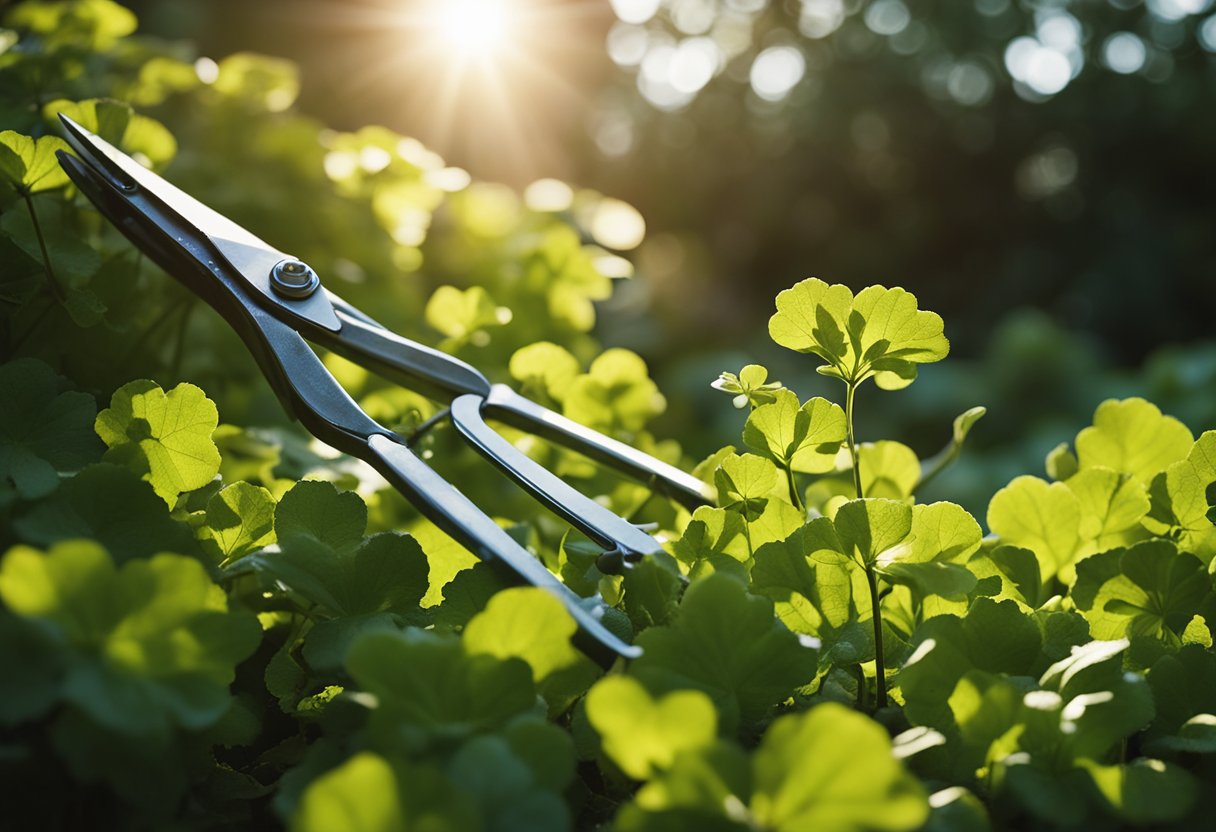Pruning geraniums is an essential task for any gardener who wants to keep their plants healthy and looking their best. However, many people are intimidated by the process and are unsure of where to start. In this article, I will guide you through everything you need to know about “How to Prune Geraniums“, from understanding the basics to advanced tips for experienced gardeners.
Understanding Geranium Pruning is the first step in mastering this essential gardening skill. Geraniums are a type of flowering plant that require pruning to promote healthy growth and flowering. By removing dead or diseased branches, you can help prevent the spread of disease and ensure that your plants are getting the nutrients they need to thrive. In addition, pruning can help shape your plants and encourage them to produce more flowers.
Key Takeaways
- Pruning geraniums is a crucial part of keeping your plants healthy and looking their best.
- Understanding the basics of geranium pruning is essential before you begin.
- By following proper pruning techniques and post-pruning care, you can help your geraniums thrive.
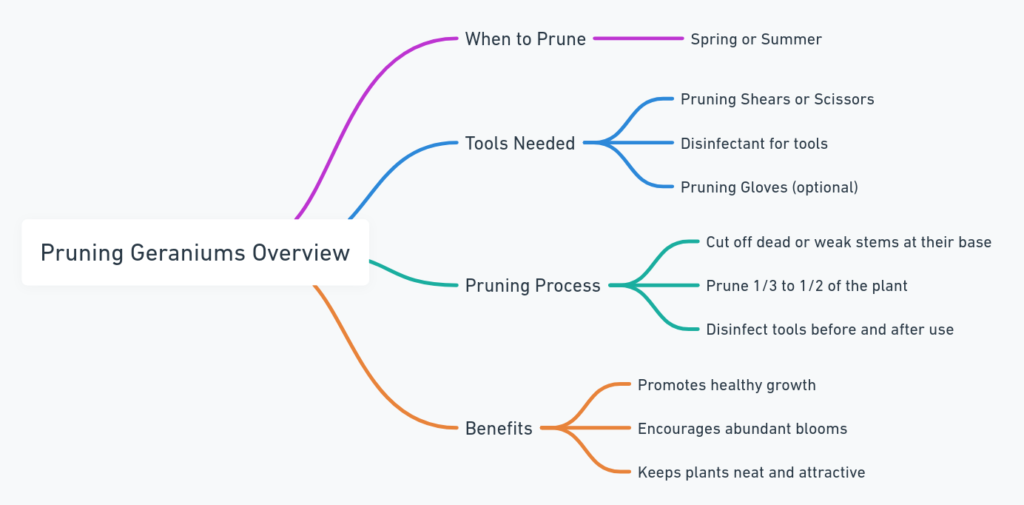
Understanding Geranium Pruning
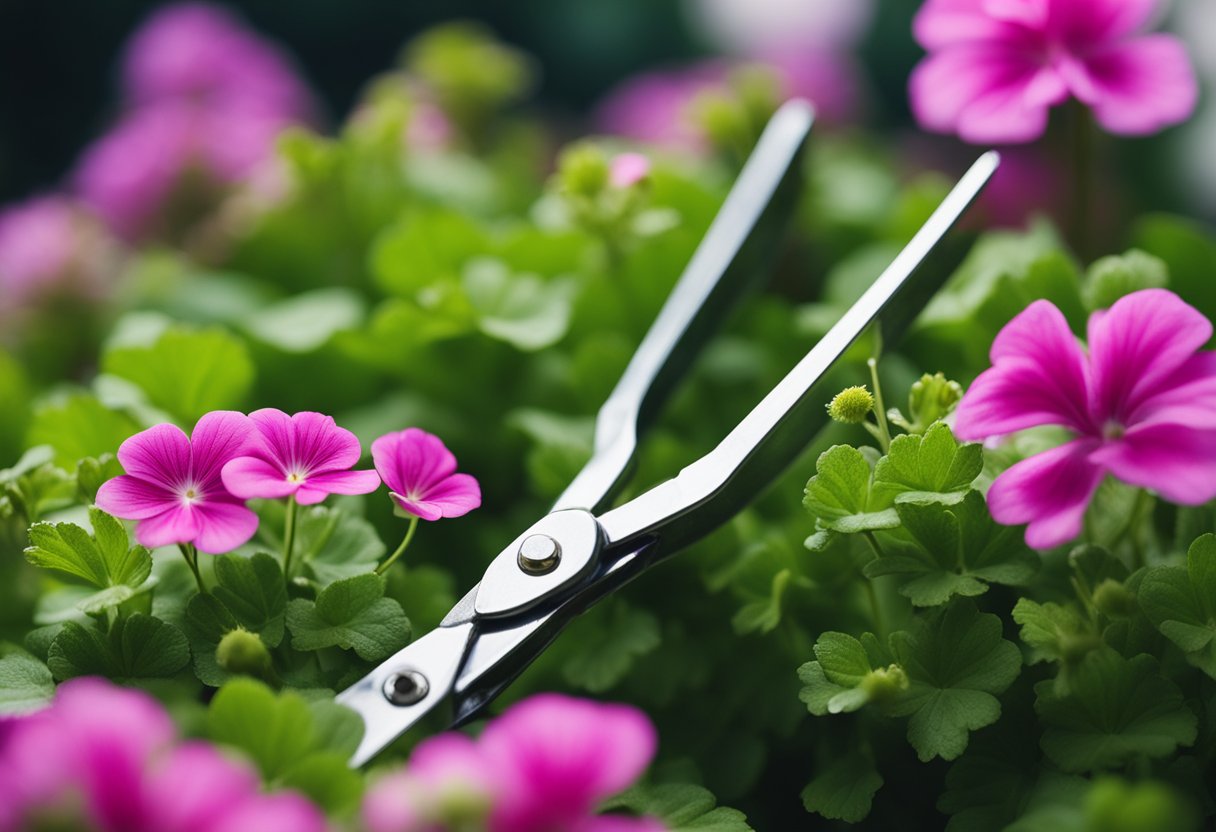
As an experienced gardener, I know that pruning is a necessary task for keeping geraniums healthy and vibrant. Proper pruning can help control the size and shape of the plant, encourage blooming, and prevent disease. Here are some key things to keep in mind when pruning geraniums.
Benefits of Pruning
Regular pruning can help promote healthy growth and encourage the production of more blooms. By removing dead or damaged foliage, you can help prevent disease from spreading throughout the plant. Additionally, pruning can help control the size and shape of the plant, making it easier to fit into your garden or container.
Best Time to Prune
The best time to prune geraniums is in the spring, just before new growth begins. This allows the plant to focus its energy on producing new foliage and blooms. You can also prune throughout the growing season to remove spent blooms and encourage new growth.
Types of Geraniums and Their Pruning Needs
There are many different types of geraniums, and each one has its own unique pruning needs. Here are some general guidelines to keep in mind:
- Zonal geraniums: These are the most common type of geranium and require regular pruning to keep them looking their best. Pinch back the tips of the plant to encourage bushier growth and remove spent blooms to promote new ones.
- Ivy geraniums: These trailing plants require less pruning than zonal geraniums. Remove any dead or damaged foliage and trim back the tips of the plant to encourage branching.
- Scented geraniums: These plants are grown for their fragrant foliage rather than their blooms. Prune them lightly to shape the plant and remove any dead or damaged leaves.
By understanding the benefits of pruning, the best time to prune, and the specific needs of your geraniums, you can keep your plants healthy and looking their best.
Preparing to Prune
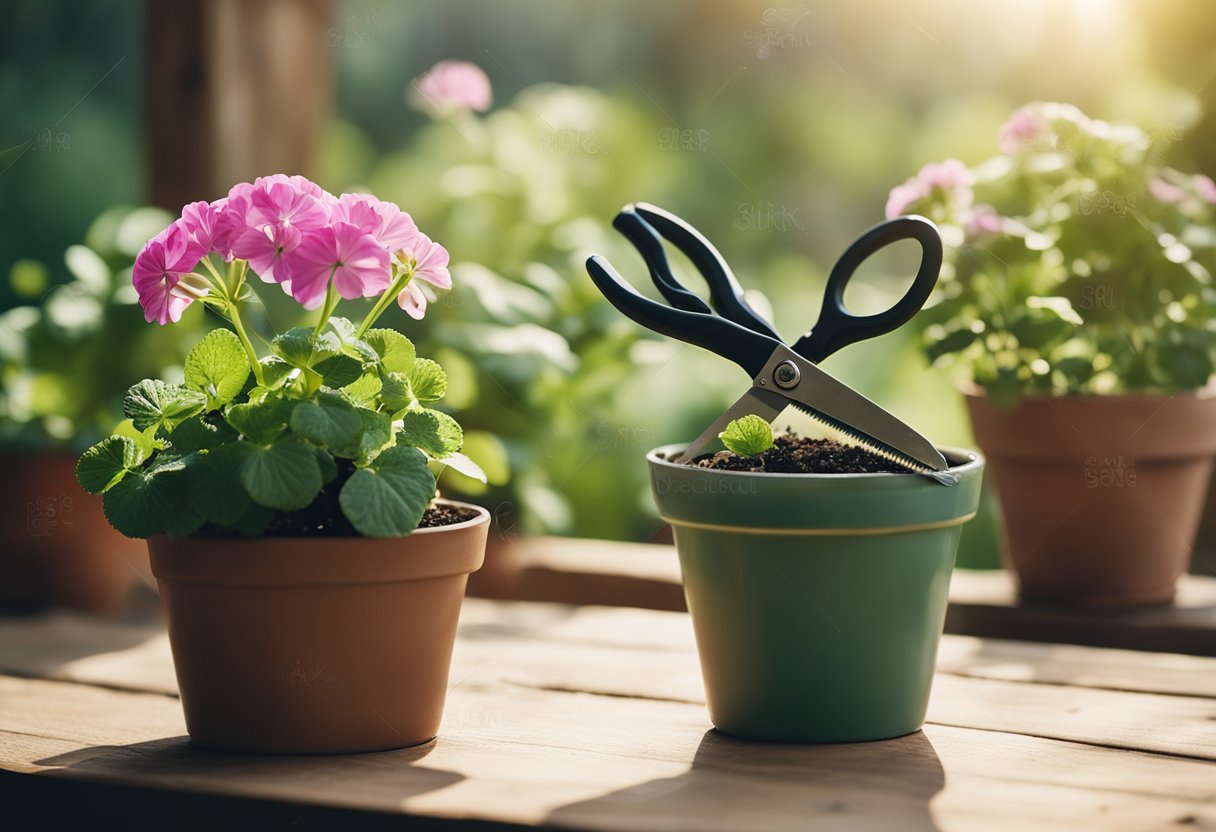
Tools Required
Before pruning your geraniums, you will need to gather a few tools. The following tools are essential for pruning geraniums:
| Tool | Description |
|---|---|
| Pruning shears | Used to make clean cuts on the stems |
| Gloves | Protects your hands from thorns and other sharp objects |
| Hand-held pruning saw | Used for thicker stems |
| Loppers | Used for larger branches |
Sanitizing Your Tools
It is important to sanitize your tools before pruning to prevent the spread of diseases. To sanitize your tools, you can use a solution of one part bleach to nine parts water. Dip your tools in the solution for a few minutes and then rinse them with water and dry them with a clean cloth.
Assessing Your Geranium
Before pruning your geraniums, you should assess their overall health and shape. Look for any dead or diseased branches, as well as any crossing or rubbing branches. You should also consider the shape you want your geranium to be, whether it be round, square, or another shape. This will help you determine which branches to prune and which ones to leave.
By preparing properly before pruning your geraniums, you can ensure that your plants will grow healthy and strong.
Pruning Techniques
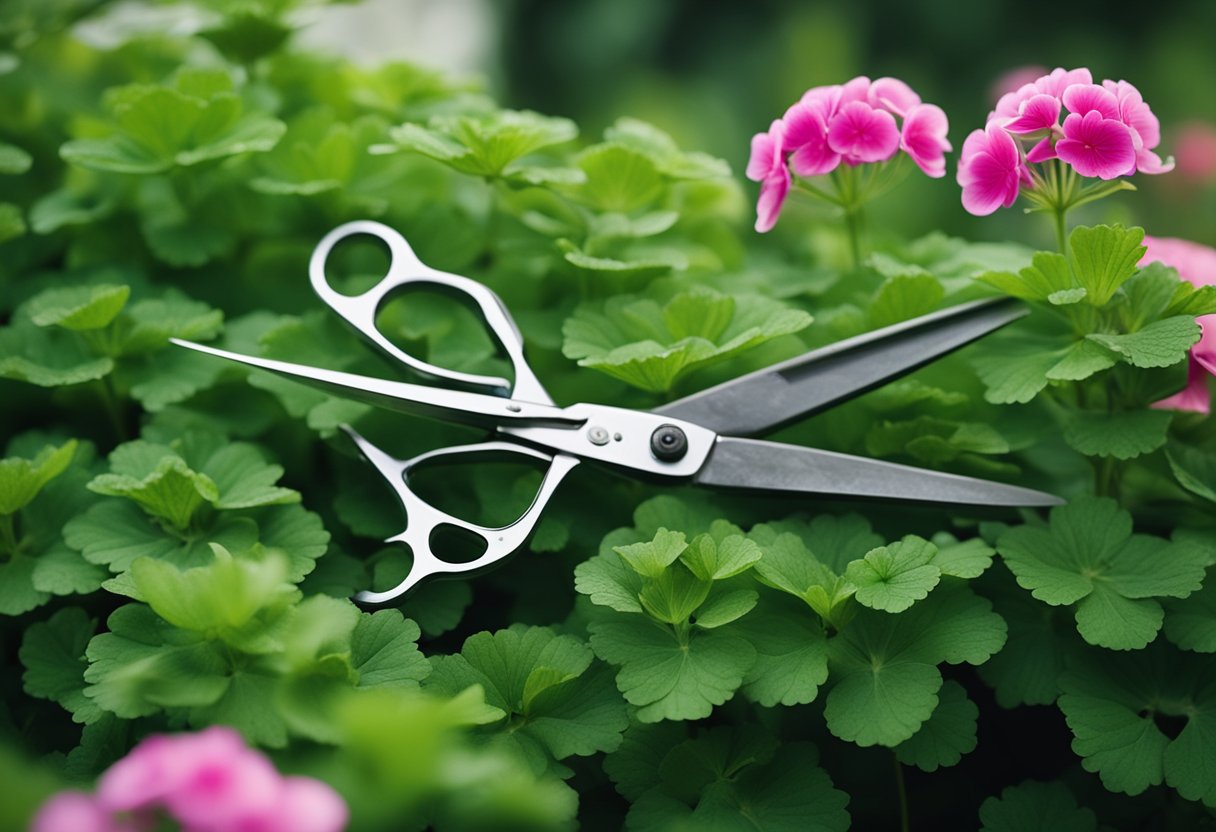
Deadheading Spent Blooms
When geraniums have finished blooming, it is important to remove the spent blooms to encourage more blooms to develop. Deadheading is the process of removing the spent blooms. To do this, I use a pair of sharp, clean pruning shears and cut the stem just above the first set of healthy leaves below the spent bloom. This will help promote new growth and encourage more blooms to form.
Removing Dead or Yellow Leaves
It is important to remove dead or yellow leaves from geraniums to keep them healthy and looking their best. I use my fingers or a pair of clean scissors to remove any dead or yellow leaves, making sure to cut as close to the stem as possible without damaging it. This will help prevent the spread of disease and pests and keep the plant looking neat and tidy.
Shaping the Geranium
Pruning can be used to shape geraniums into a desired form. I like to prune my geraniums to maintain a bushy, compact shape. To do this, I remove any long, leggy stems and cut back any branches that are growing too far out of the desired shape. I also pinch back the tips of the branches to encourage branching and promote a fuller shape.
Pruning for Overwintering
If you plan to overwinter your geraniums, pruning is an important step in preparing them for the dormant season. I prune my geraniums in the fall by removing any dead or yellow leaves and cutting back the stems by about one-third. This will help the plant conserve energy and prepare for the winter months.
Read Also | How to Grow Broccoli in a Container: A Step-by-Step Guide
Post-Pruning Care

After pruning your geraniums, it’s important to take good care of them to ensure they recover properly and continue to thrive. Here are some tips on post-pruning care:
Watering After Pruning
After pruning, it’s important to water your geraniums thoroughly to help them recover from the stress of pruning. Be sure to water deeply, so that the water reaches the roots. However, be careful not to overwater, as this can lead to root rot. It’s best to wait until the top inch of soil is dry before watering again.
Fertilization Schedule
After pruning, your geraniums will benefit from a boost of nutrients to help them recover and grow. I recommend fertilizing your geraniums with a balanced fertilizer, such as a 10-10-10 or 20-20-20 fertilizer, once a month during the growing season. Be sure to follow the instructions on the fertilizer package carefully, as over-fertilizing can damage your plants.
Monitoring Growth and Health
After pruning, it’s important to keep an eye on your geraniums to make sure they’re growing and staying healthy. Check for signs of new growth, such as new leaves and stems, and watch for any signs of stress, such as wilting or yellowing leaves. If you notice any problems, take action immediately to help your plants recover.
In summary, after pruning your geraniums, be sure to water them thoroughly, fertilize them regularly, and monitor their growth and health to ensure they recover properly and continue to thrive.
Common Pruning Mistakes
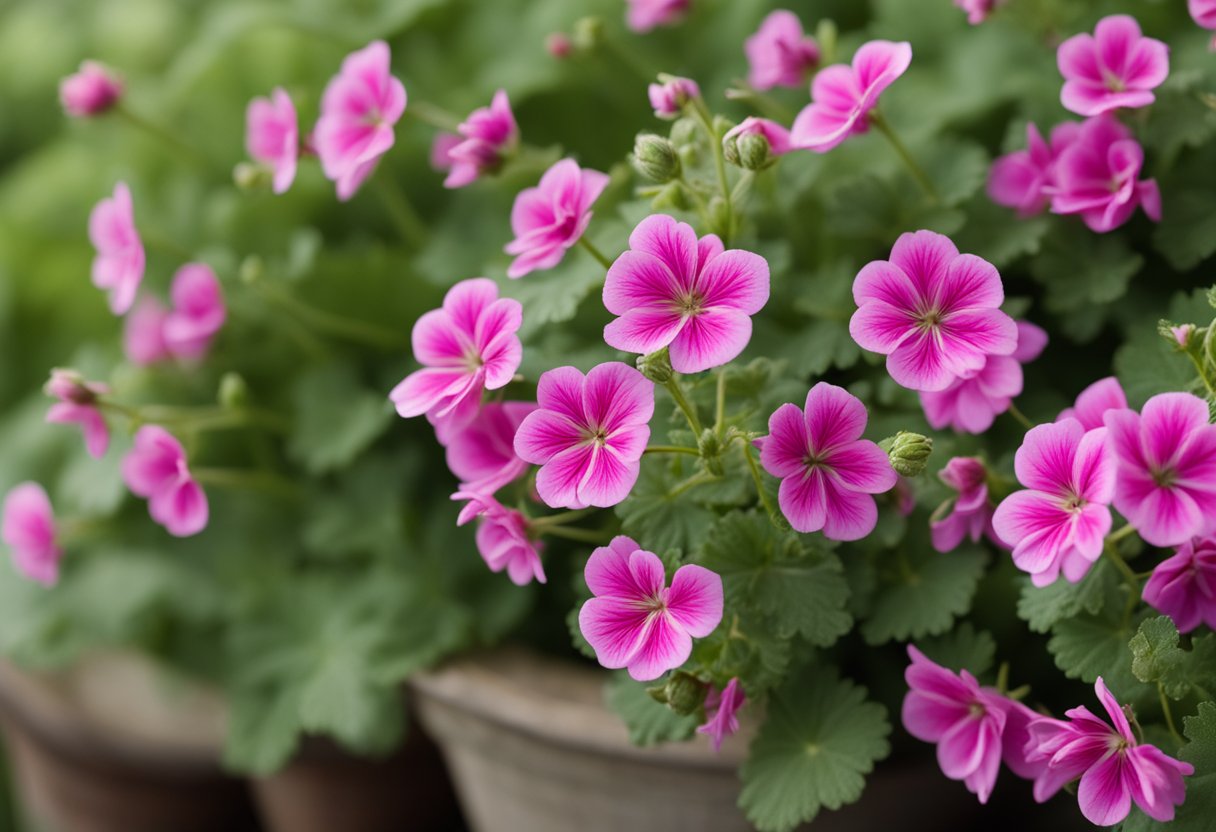
Over-Pruning
One of the most common mistakes that gardeners make when pruning geraniums is over-pruning. Over-pruning can lead to stunted growth, reduced flowering, and even death of the plant. It is important to remember that geraniums are not heavy feeders and require minimal pruning.
To avoid over-pruning, I recommend pruning no more than one-third of the plant’s total growth at any one time. This will allow the plant to recover and continue to thrive.
Improper Timing
Another common mistake is improper timing of pruning. Pruning at the wrong time can result in damage to the plant and reduced flowering. The best time to prune geraniums is in the early spring, just before new growth begins. This will encourage the plant to produce new growth and promote healthy flowering.
It is important to avoid pruning in the fall or winter, as this can damage the plant and make it more susceptible to disease and pests.
Neglecting Tool Hygiene
Neglecting tool hygiene is a mistake that many gardeners make when pruning geraniums. Dirty tools can spread disease and pests from one plant to another, which can be detrimental to the health of the plant.
To avoid this, I recommend cleaning your pruning tools with a solution of one part bleach to nine parts water before and after each use. This will help to prevent the spread of disease and pests and ensure the health of your plants.
In conclusion, by avoiding these common pruning mistakes, you can ensure the health and longevity of your geraniums. Remember to prune no more than one-third of the plant’s growth, prune at the right time, and keep your tools clean to prevent the spread of disease and pests.
Advanced Tips – How to Prune Geraniums
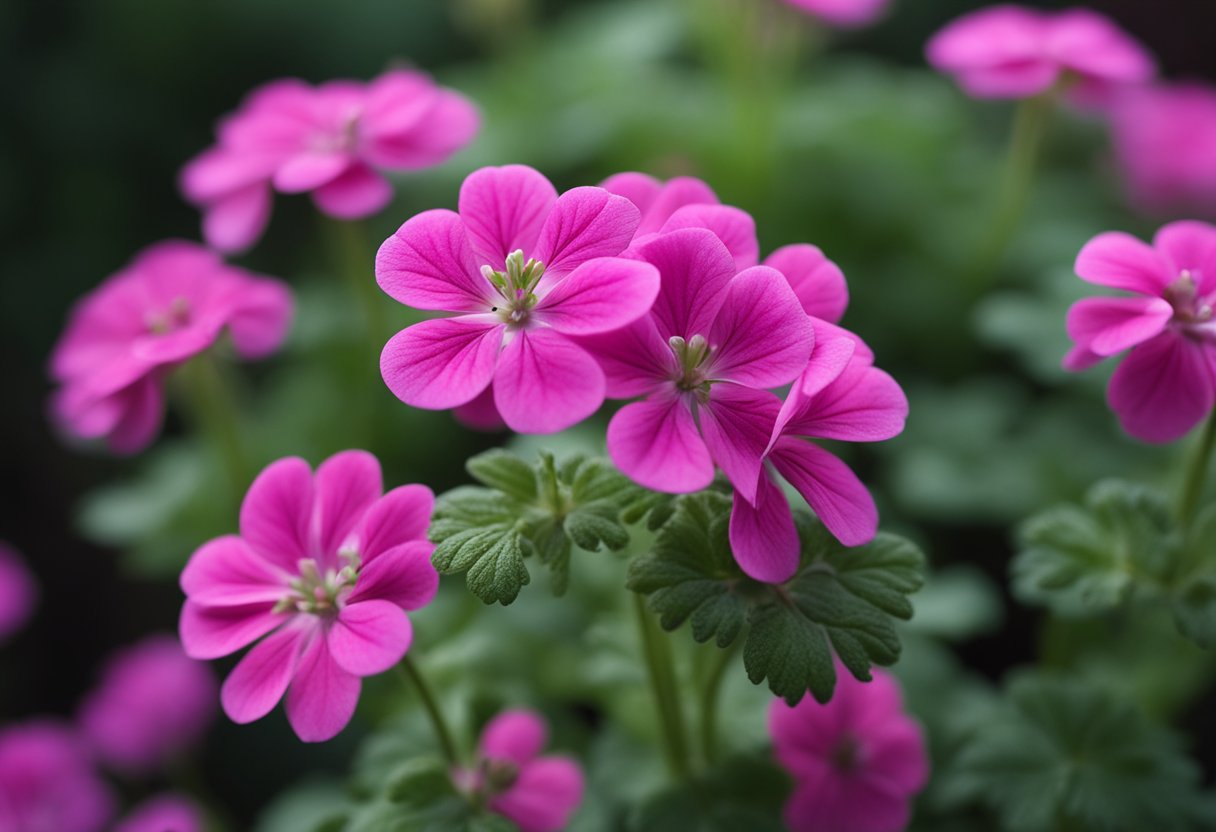
Encouraging Bushier Growth
If you want your geraniums to have a fuller and bushier appearance, you can use a technique called pinching. This involves using your fingertips or pruning shears to remove the tips of the stems, just above a leaf node. This will encourage the plant to produce more lateral shoots, resulting in a denser growth habit. Repeat this process every few weeks during the growing season to maintain the desired shape.
Managing Pests During Pruning
When pruning your geraniums, it’s important to keep an eye out for any pests that may be present. Aphids, spider mites, and whiteflies are common pests that can infest geraniums. To prevent the spread of pests, make sure to sterilize your pruning shears between cuts using rubbing alcohol or a solution of one part bleach to nine parts water. If you notice any signs of pest infestation, such as discolored or distorted leaves, you may need to treat the plant with an insecticidal soap or neem oil.
Propagating from Cuttings
If you want to propagate your geraniums, taking cuttings is a simple and effective method. To do this, select a healthy stem and cut it just below a node, using sharp pruning shears. Remove any leaves from the lower portion of the stem, leaving only a few at the top. Dip the cut end of the stem in rooting hormone and plant it in a pot filled with moist potting soil. Place the pot in a warm, bright location and keep the soil moist. In a few weeks, the cutting should develop roots and can be transplanted into its own pot.
